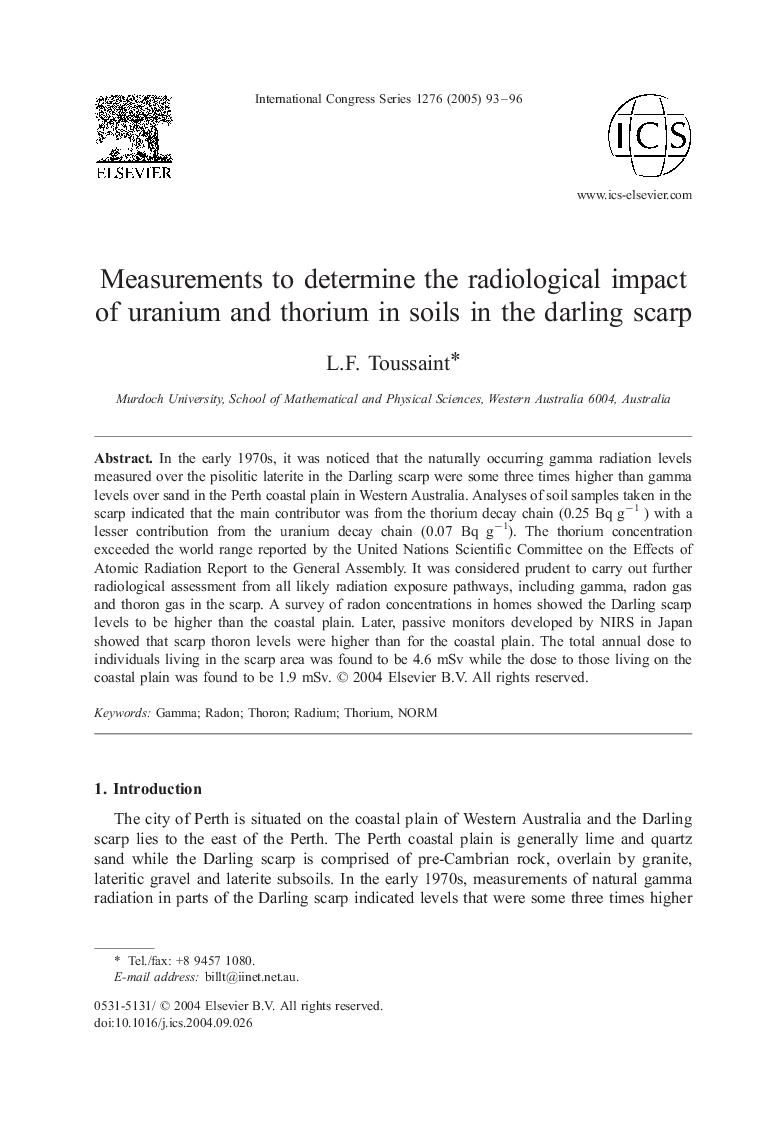| Article ID | Journal | Published Year | Pages | File Type |
|---|---|---|---|---|
| 9021575 | International Congress Series | 2005 | 4 Pages |
Abstract
In the early 1970s, it was noticed that the naturally occurring gamma radiation levels measured over the pisolitic laterite in the Darling scarp were some three times higher than gamma levels over sand in the Perth coastal plain in Western Australia. Analyses of soil samples taken in the scarp indicated that the main contributor was from the thorium decay chain (0.25 Bq gâ1 ) with a lesser contribution from the uranium decay chain (0.07 Bq gâ1). The thorium concentration exceeded the world range reported by the United Nations Scientific Committee on the Effects of Atomic Radiation Report to the General Assembly. It was considered prudent to carry out further radiological assessment from all likely radiation exposure pathways, including gamma, radon gas and thoron gas in the scarp. A survey of radon concentrations in homes showed the Darling scarp levels to be higher than the coastal plain. Later, passive monitors developed by NIRS in Japan showed that scarp thoron levels were higher than for the coastal plain. The total annual dose to individuals living in the scarp area was found to be 4.6 mSv while the dose to those living on the coastal plain was found to be 1.9 mSv.
Related Topics
Life Sciences
Biochemistry, Genetics and Molecular Biology
Molecular Biology
Authors
L.F. Toussaint,
